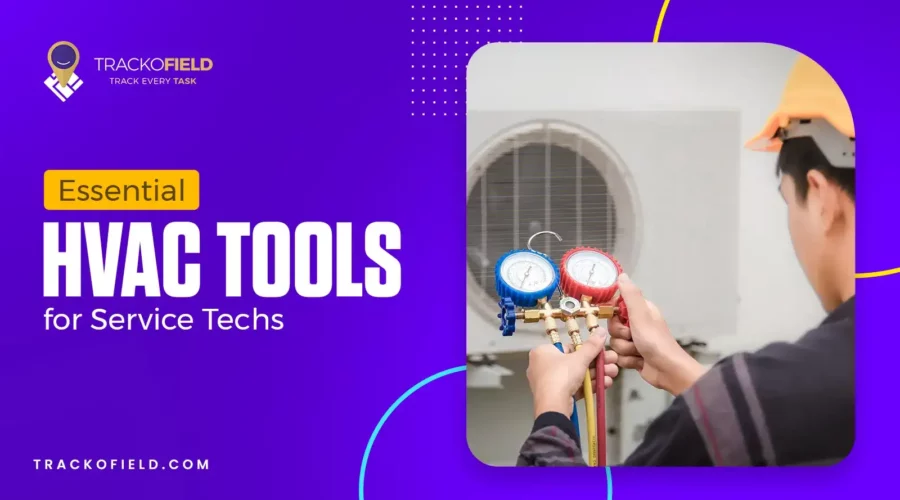-
TrackoBit
Manage commercial vehicles with the new-age Fleet Management Software
TrackoBit -
TrackoField
Streamline your scattered workforce with Field Force Management Software
TrackoField -
Features Resources
-
Blog
Carefully curated articles to update you on industrial trends. -
White Paper
Insightful papers and analysis on essential subject matters. -
Glossary
Explore an alphabetical list of relevant industry terms. -
What’s New
Get TrackoBit & TrackoField monthly updates here. -
Case Study
Explore the cases we solved with our diverse solutions. -
Comparisons
Compare platforms, features, and pricing to find your best fit.
-
About Us
Get to know TrackoBit: our team, ethos, values, and vision. -
Careers
Join the most dynamic cult of coders, creatives and changemakers. -
Tech Support
Learn about our technical support team and services in detail. -
Events
Check out the exhibitions where we left our marks and conquered. -
Contact Us
Connect with us and let us know how we can be of service.
Essential HVAC Tools for Field Service Techs in 2026
- Author:Tithi Agarwal
- Read Time:7 min
- Published:
- Last Update: January 15, 2026
Table of Contents
Toggle
There is a wide range of HVAC tools and software available in the market. This blog will guide you in investing in the right one.
Table of Contents
Toggle
Having the right HVAC tools increases customer satisfaction and productivity for HVAC contractors and technicians. The types and quality of the tools enable techs to complete a range of jobs, from simple to complex. Additionally, they can potentially boost first-time fix rates — both of which are key to increasing service requests and adding more money to your bottom line.
HVAC technicians must be ready to handle a variety of repairs throughout their work. Properly installing and repairing furnaces, air conditioners, and hot water tanks requires specific training and the right tools.
The article provides a detailed list of software and hardware tools that all HVAC contractors should ensure they have for success in 2026.
What Does an HVAC Technician Do?
HVAC technicians install, maintain, and repair indoor climate systems. HVAC stands for heating, ventilation, and air conditioning, and these technicians work on air conditioning, heating, and refrigeration systems that control temperature and air quality within buildings. Technicians sometimes specialize in installing, maintaining, and repairing certain equipment, like solar heating systems.
On a day-to-day basis, HVAC technicians travel to perform work in homes, offices, schools, hospitals, and other facilities that rely on temperature control systems. They run tests on equipment and repair or replace any nonfunctional or expired parts. This can entail any of the following duties:
- Changing filters
- Cleaning ducts
- Refilling fluids
- Installing thermostats
- Connecting equipment to fuel lines
- Installing electrical wiring
- Monitoring equipment for leaks
HVAC technicians rely on a variety of tools to complete these duties efficiently and professionally. Some companies provide HVAC technicians with the tools they need to complete jobs, especially expensive equipment, but some technicians have to bring their own tools to work every day.
What Tools Do HVAC Technicians Need?
It takes many different roles to run a successful HVAC business. HVAC technicians complete projects at job sites, customer service representatives respond to requests, and dispatchers ensure the right tech gets to the right job. All these employees require different tools to get the job done, but techs require the widest assortment of equipment and devices.
Learn which types of tools are valuable for enhancing the efficiency and productivity of the entire operation.
The Hardware Tools that Field Service Technicians Just Cannot Do Without
Basic Hand Tools
- Screwdrivers and nut drivers: Consider a set with a full range of nut drivers and screwdrivers, including those with Phillips-head and flathead bits.
- Pliers: Sets should include multiple pliers, including channel lock, slip-joint, and needle-nose pliers for handling bolts, pipes, and wires of multiple sizes.
- Hammer: A standard-size hammer can be used for various HVAC tasks. Technicians often prefer a lightweight hammer with gripping material and durable fiberglass features to avoid weighing down their tool belt or bag.
- Flashlight or Headlamp: Flashlights are basic but important for every HVAC technician to have.
- Wrenches: HVAC techs need several wrenches, including fixed and adjustable wrenches for general use and crescent and pipe wrenches for specific applications.
- Cutters: Metal and tubing cutters allow techs to slice through most HVAC materials.
- Drills: Drills enable effective fastening of parts to HVAC units. Battery-powered, cordless drills are ideal for efficiency and adaptability for many uses. Consider a power drill with at least 24 volts and multiple bits.
- Gauges: Gauges measure refrigerant pressure and detect system leaks. Techs need several types, including manifold gauges and refrigeration gauges.
- Extension cords: Extension cords are necessary to extend the range of corded power tools. Avoid overly bulky extension cords.
- Staple gun: Staple guns secure foil lines and joists when assembling ductwork.

Power & Specialized HVAC Tools
- Core removal: A core removal tool is a specialty HVAC tool that helps remove broken or damaged valve cores in air conditioning and refrigeration units. This tool can help you start the replacement process quickly.
- Coil fin straightener: A coil fin straightener helps HVAC technicians straighten and clean air conditioner condenser coils when they become dirty, clogged, or warped. This tool can improve heat exchange and make air flow more effective.
- Thermometers: HVAC technicians must take correct temperature measurements to read air differences, superheat, and subcooling. Like other HVAC tools, there are plenty to choose from, including pocket thermometers, infrared thermometers, and digital HVAC thermometers.
- Multimeter: HVAC technicians must evaluate whether or not the motor, pump, control board, or compressor is working properly. An HVAC multimeter provides voltage, amperage, resistance, and temperature readings, enabling you to determine if the above are functioning. It also serves as a safety device allowing you to check for live wires.
- Caulking gun: HVAC technicians need a caulking gun for sealing ducts and filling holes.
- Nitrogen regulator: Nitrogen regulators reduce high pressure in gases and liquids to prevent them from releasing simultaneously.
- Leak detector: A leak detector can identify areas with moisture so you can locate the source of a leak. There are four major types of leak detectors:
- Psychrometer: A psychrometer measures humidity by taking both a wet-bulb and dry-bulb temperature reading. To evaluate how well air conditioning is actually functioning, the psychrometer enables you to measure the condition of the air.
- Hand seamers and snips: For bending or flattening metal by hand, hand seamers are another useful tool.
- Crimper: Crimpers make it easier to conform certain materials to piping.
- Awl: Awls allow techs to score sheet metal for straight cutting. Techs can also use awls to create holes in different materials.
- Thermal imaging tools: When diagnosing complex issues with HVAC systems, thermal imaging cameras help techs identify the source of the problem.
Safety Tools
- Gloves: To prevent cuts and lacerations, wearing heavy-duty gloves is a prerequisite.
- Goggles: You can block shards of metal and glass, as well as chemicals, from entering your eyes by wearing industry-approved safety glasses.
- Ear muffs or plugs: When using power tools, wear earplugs to avoid damage to your hearing.
- Protective shoes: HVAC technicians are on their feet most of the day, so a comfortable, durable, and lightweight boot is important.
- Lockout/Tagout (LOTO) devices: Comply with OSHA guidelines with the correct lockout/tagout protection, which prevents equipment from starting during a job.
- Voltage tester: Non-contact voltage testers ensure electrical power is shut off before handling electrical parts.
HVAC Field Management Software Tool By TrackoField For Efficient Functioning
Increasingly, HVAC field service contractors and techs are transforming their businesses by choosing automated platforms to effectively schedule, dispatch, and manage on-field HVAC crews or technicians.
Everything you once wrote down on paper, maintained in a spreadsheet, or dealt with over the telephone can now be more efficiently managed in an HVAC software like TrackoField.
Field service software facilitates better coordination between field techs, dispatchers, and other office staff. It streamlines daily functions like scheduling, dispatching, and tracking to improve efficiency and support greater profitability.
Here are some of the features of HVAC software that can assist in managing technicians and ensuring jobs get done on time.
1. Real-time Location and Task Tracking
TrackoField’s HVAC service software assists managers in dispatching and tracking technicians and receiving task updates in real time. This eliminates the archaic method of calling every 5 minutes to determine the current status.
2. Efficient HVAC Job Scheduling
One of the most important HVAC tools is the scheduling calendar that the HVAC software must have. This feature gives you complete visibility into technicians’ availability on the field. This helps you schedule and dispatch your team to the job site more promptly.
3. Performance Dashboard/Reports
The software has several reports and an analytical dashboard that provide insights into technicians’ productivity and efficiency, the number of visits, tasks assigned and completed, and more. Reports like target vs. achievement are great for judging each technician’s efficiency while performing their tasks.
4. Accurate Payroll Computation
HVAC dispatch management software also ensures automated and accurate payroll computation, which is achieved via its payroll management system. The system syncs the crucial data, i.e., employees’ actual working hours, days off, overtime, travel allowance, etc., from the leave and attendance management system. Therein, it converts the data into employees’ payroll hours. Thus, it calculates accurate employees’ salaries and wages automatically.
5. Geo-coded Attendance Marking
Geo-coded attendance marking is an essential tool for HVAC technicians as it allows them to mark their attendance remotely. To maintain the authenticity of the attendance, TrackoField’s geo-sensitive technology only allows them to mark their presence once they reach their first task location.
6. Mobile App Accessibility
To aid the remote nature of the HVAC job, the HVAC software has a technician app that communicates all important details, such as task schedules, details, a chatbox for queries/communication, and many other features, to assist technicians in finishing their jobs perfectly and quickly.
Conclusion
By investing in the right tools and software for your HVAC business, you can improve efficiency, boost sales, increase customer satisfaction, and ultimately grow your business. Consider incorporating these essential HVAC tools into your technicians’ toolkit and exploring the benefits of partnering with TrackoField to take your HVAC business to the next level.
Ready to grow your business? Book a free trial today!
Tithi Agarwal is an established content marketing specialist with years of experience in Telematics and the SaaS domain. With a strong background in literature and industrial expertise in technical wr... Read More
Related Blogs
-

How TrackoField’s Analytical Intelligence Transforms Field Operations
Mudit Chhikara January 12, 2026Turn complex field data into clear insights. Use analytical intelligence to drive faster, smarter decisions.
-

Grameen Credit Score: Everything that NBFCs and MFIs Must Know in 2026
Shemanti Ghosh January 6, 2026Empower the underserved Joint Liability Groups (JLG), Self-Help Groups (SHG), and residents of rural India with better credit assessment and…
-

How MFIs Are Working In Modern Day Scenario? A Complete Breakdown
Mudit Chhikara December 30, 2025How field force automation is helping MFIs transform field operations.
-

Unified Field Workforce Dashboard: Monitor Tasks, Attendance & More In One Place
Mudit Chhikara December 15, 2025Bring full clarity to field operations with a single, real-time field workforce dashboard.

Subscribe for weekly strategies to boost field team productivity.
Your inbox awaits a welcome email. Stay tuned for the latest blog updates & expert insights.
"While you're here, dive into some more reads or grab quick bites from our social platforms!"Stay Updated on tech, telematics and mobility. Don't miss out on the latest in the industry.
We use cookies to enhance and personalize your browsing experience. By continuing to use our website, you agree to our Privacy Policy.



































